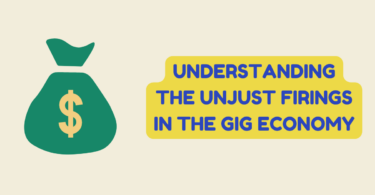
AI
There are many challenges for businesses that handle supply chains, especially today. One important aspect is predicting how much demand there will be for their products. This is where demand forecasting comes in. It helps businesses make better plans for their inventory, production schedules, and financial decisions.
A recent survey by Gartner found that demand forecasting is the most popular way companies use artificial intelligence (AI) in supply chain planning. In addition, they found that 45% of companies already use AI for demand forecasting, and 43% more plan to use it in the next two years.
Moreover, with the help of machine learning algorithms, forecasting accuracy has greatly improved. This means companies can better plan how much stock to have on hand and avoid situations where they either have too much or run out of stock. This optimization reduces costs and helps businesses be more successful.
In this article, we will explore more about how AI uses sentiment analysis to transform demand forecasting and drive better business outcomes. Read on.
What is Demand Forecasting?
Demand forecasting is a fancy term for predicting how much customers want to buy a certain product. It’s like using data from the past to make a guess about how much people will want to buy in the future. Businesses use this information to make smart decisions and avoid problems with having too much or too little stock.
By using demand forecasting methods, companies can make better choices about things like money, risks, and planning. They can figure out how much money they need, how many people they need to hire, and how much stuff they need to make. It helps them avoid wasting resources and makes sure they have enough of what people want to buy.
What are the benefits of demand forecasting?
Demand forecasting is an invaluable tool that helps organizations improve their supply chain, sales, and marketing. It’s all about ensuring they have the right amount of products in stock without having too much or running out completely. By using demand forecasting, businesses can avoid the hassle of having too many products that they can’t sell or disappointing customers by needing more. It’s all about finding that sweet spot and keeping everything running smoothly.
1. Better Accuracy
Demand forecasting gets smarter with time. By using machine learning algorithms, businesses can learn from past data and make more accurate predictions in the future. This means they can better estimate how much of a product people want.
2. Happier Customers
Have you ever wanted to buy something, but it was out of stock? It’s frustrating, right? Demand forecasting helps businesses avoid this situation by ensuring that products are available when customers want them. This makes customers happier and more likely to stick with a brand they trust.
3. Smart Discounts
Sometimes, businesses need more stock to sell. They have to reduce prices to get rid of it, which means less profit. With demand forecasting, businesses can better plan their inventory and avoid excess stock. This helps them avoid unnecessary discounts and maintain their profit margins.
4. Efficient Workforce Planning
Knowing how much demand to expect can help businesses plan their workforce better. They can decide how many full-time and part-time employees they need throughout the year, which helps them manage costs and work more efficiently.
5. Overall Efficiency
When businesses have accurate demand forecasts, they can focus on important things instead of constantly worrying about inventory and staffing. They can spend more time on strategic decisions, making their operations run smoother and more efficiently.
What’s the Role of AI in Demand Forecasting?
AI has revolutionized demand forecasting in the business world, making traditional methods outdated. With machine learning, businesses achieve accurate forecasts and optimize restocking plans.
Moreover, machine learning takes forecasting to a new level by incorporating real-time data from various sources like demographics, weather, online reviews, and social media. It enables supply chains to outperform manual approaches, adapt to changes, and make informed decisions.
AI-powered forecasting handles new products without sales history by analyzing similar items. The impact is significant: AI reduces errors by 30-50% in supply chains, leading to a 65% reduction in lost sales. It also lowers warehousing costs by 10-40%. The estimated impact reaches $1.2-2 trillion, showcasing AI’s value in efficiency, cost reduction, and performance.
AI and Sentiment AnalysisAI, with its ability to analyze vast amounts of data and learn from patterns, is revolutionizing demand forecasting.
One of the key components of this transformation is sentiment analysis, which involves using natural language processing (NLP) techniques to extract and interpret sentiment from text data. By analyzing social media posts, customer reviews, surveys, and other textual sources, sentiment analysis helps capture the collective sentiment of consumers towards a brand, product, or service.
What is Sentiment Analysis?
Sentiment analysis is a technology that helps understand people’s feelings in written text. It analyzes words to determine if the overall sentiment is positive, negative, or neutral. For example, in a movie review, it can tell if someone liked or disliked the film based on their words.
Businesses use sentiment analysis to learn how customers feel about their products or brand. It helps them make improvements and understand their opinions better. It’s like a computer that can summarize how people feel by reading what they write, giving valuable insights in just a few words.
How Does Sentiment Analysis Impact Demand Forecasting?
- Real-Time Customer Feedback: Sentiment analysis captures up-to-date customer feedback, helping businesses understand the current market sentiment for accurate demand forecasting.
- Incorporating External Factors: Sentiment analysis identifies external influences like economic conditions and social trends, enabling businesses to adjust forecasts accordingly.
- Fine-Tuning Marketing Strategies: Sentiment analysis helps refine marketing efforts by understanding customer perceptions, leading to improved demand forecasting accuracy.
- Predicting Product Performance: Sentiment analysis predicts how a product or service will perform by analyzing customer expectations and preferences, aiding in accurate demand forecasting.
How Do AI and Sentiment Analysis Help Businesses with Demand Forecasting?
Integrating AI and sentiment analysis into demand forecasting brings many benefits to businesses. It makes forecasting more accurate, helps understand customers better, improves inventory management, and increases operational efficiency. Using sentiment analysis, organizations can align their strategies with customers’ feelings and gain an advantage in the competitive marketplace.
AI-driven demand forecasting with sentiment analysis is getting better and better. Advances in machine learning and NLP techniques will make sentiment analysis even more precise, allowing organizations to understand text data more deeply. Combining sentiment analysis with other AI technologies like image recognition and voice analysis will further improve the accuracy and depth of demand forecasting models.
Conclusion
AI, coupled with sentiment analysis, is transforming the field of demand forecasting by providing organizations with powerful tools to capture and analyze customer sentiment. By incorporating real-time sentiment data into their forecasting models, businesses can gain a competitive edge, optimize their operations, and meet customer demands more effectively. As AI continues to evolve, by leveraging the help of the right AI services provider, we can expect demand forecasting to become even more accurate and insightful, enabling businesses to make data-driven decisions and thrive in an increasingly dynamic marketplace.
Author bio: Vishnu Narayan is a content writer, working at ThinkPalm Technologies, a software & mobile app development services company focusing on technologies like BigData, IoT, and AI services. He is a passionate writer, a tech enthusiast, and an avid reader who tries to tour the globe with a heart that longs to see more sunsets than Netflix!






